The magnitude of force refers to the strength or intensity of a force. It is a crucial concept in physics that helps us understand how objects interact with each other. The magnitude of force can be measured in various units, such as Newtons (N) or pounds (lbs). In this article, we will explore different examples of magnitude of force and how it affects the motion and behavior of objects. Understanding the magnitude of force is essential in fields like engineering, mechanics, and even everyday life situations. So, let’s dive in and explore some fascinating examples of the magnitude of force in action.
Key Takeaways
- The magnitude of force is a measure of the strength or intensity of a force.
- Examples of forces with large magnitudes include the force exerted by a rocket engine, the force of a car crashing into a wall, and the force exerted by a weightlifter lifting heavy weights.
- Forces with small magnitudes include the force exerted by a person pushing a door open, the force of gravity pulling an object downward, and the force of a pencil resting on a table.
- The magnitude of force can be calculated using Newton’s second law, which states that force is equal to mass multiplied by acceleration.
How to Find Magnitude of Force Examples
In the world around us, forces are constantly at play. From the gentle push of a breeze to the powerful pull of gravity, forces shape our everyday experiences. Understanding the magnitude of these forces is crucial in many fields, such as physics, engineering, and even sports. In this section, we will explore how to find magnitude of force examples by identifying everyday situations involving force, analyzing the forces involved in each situation, and determining the magnitude of force exerted in each situation.
Identifying Everyday Situations Involving Force
To begin our exploration of force examples, let’s take a moment to consider the various situations in which forces are at play. Forces can be found in countless scenarios, both big and small. Here are a few examples to help illustrate the point:
-
Throwing a Ball: When you throw a ball, you exert a force on it. The force you apply determines how far and how fast the ball will travel.
-
Lifting a Weight: When you lift a weight at the gym, you are exerting a force against the force of gravity. The heavier the weight, the greater the force required to lift it.
-
Driving a Car: When you press the accelerator pedal in a car, you apply a force that propels the vehicle forward. The force you exert determines how quickly the car accelerates.
-
Opening a Door: When you push or pull a door to open it, you apply a force to overcome the resistance of the door’s hinges and any friction present.
-
Jumping: When you jump, you exert a force against the ground, propelling yourself upward. The force you apply determines how high you can jump.
These examples highlight just a few everyday situations where forces are at play. By recognizing these scenarios, we can delve deeper into analyzing the forces involved.
Analyzing the Forces Involved in Each Situation
Now that we have identified some everyday situations involving force, let’s take a closer look at the forces at play in each scenario. By analyzing these forces, we can gain a better understanding of their magnitude. Let’s examine the forces involved in the examples mentioned earlier:
-
Throwing a Ball: When you throw a ball, several forces come into play. The force of your arm propels the ball forward, while gravity pulls it downward. Air resistance also acts upon the ball, opposing its motion through the air.
-
Lifting a Weight: When you lift a weight, the force you exert opposes the force of gravity pulling the weight downward. The magnitude of the force required depends on the weight of the object.
-
Driving a Car: When you press the accelerator pedal, the engine exerts a force that propels the car forward. Friction between the tires and the road also affects the force required to move the car.
-
Opening a Door: When you push or pull a door, the force you exert overcomes the resistance of the door’s hinges and any friction present. The force required depends on the weight and size of the door.
-
Jumping: When you jump, the force you apply to the ground propels you upward. Gravity acts as a downward force, opposing your upward motion. The force required to jump higher depends on factors such as leg strength and technique.
By analyzing the forces involved in each situation, we can now move on to determining the magnitude of force exerted.
Determining the Magnitude of Force Exerted in Each Situation
To determine the magnitude of force exerted in each situation, we need to consider the relevant factors and apply the appropriate formulas or calculations. Here are some ways to determine the magnitude of force in the examples we discussed:
-
Throwing a Ball: The magnitude of the force exerted when throwing a ball can be calculated using Newton’s second law of motion, which states that force equals mass multiplied by acceleration. By measuring the mass of the ball and the acceleration it experiences, we can determine the force exerted.
-
Lifting a Weight: The magnitude of the force required to lift a weight can be determined by measuring the weight of the object. The force exerted is equal to the weight of the object multiplied by the acceleration due to gravity.
-
Driving a Car: The magnitude of the force exerted when driving a car can be calculated by considering factors such as the mass of the car, the acceleration applied, and any resistive forces like friction. Newton’s second law of motion can be applied to determine the force exerted.
-
Opening a Door: The magnitude of the force required to open a door can be determined by considering factors such as the weight of the door, the distance from the hinges, and any friction present. By applying the principles of torque and equilibrium, we can calculate the force required.
-
Jumping: The magnitude of the force exerted when jumping can be determined by considering factors such as the mass of the person, the acceleration applied, and the height of the jump. Again, Newton’s second law of motion can be applied to calculate the force exerted.
By applying the appropriate formulas and calculations, we can determine the magnitude of force exerted in each situation. This knowledge is valuable in various fields and can help us better understand the world around us.
Magnitude of Force Examples
Pushing a Table

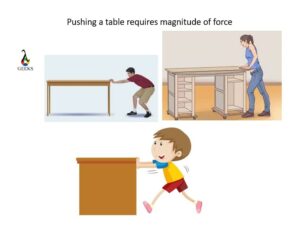
Pushing a table may seem like a simple task, but it involves various forces at play. When you push a table, you exert a force on it to overcome the force of static friction. Static friction is the force that prevents the table from moving when it is at rest.
Muscles in your body generate the necessary force to push the table. When you contract your muscles, they pull on your tendons, which in turn pull on your bones. This action creates a force that is transmitted to your hands, allowing you to exert force on the table. The magnitude of force you apply depends on factors such as the weight of the table and the coefficient of friction between the table and the floor.
Friction plays a crucial role in determining the magnitude of force required to push the table. If the coefficient of friction is high, it will be more challenging to move the table, and you will need to apply a greater force. On the other hand, if the coefficient of friction is low, it will be easier to push the table, and a smaller force will be sufficient.
Lifting a Box
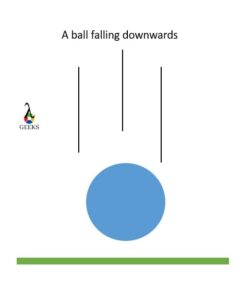

Lifting a box off the ground involves overcoming the force of gravity. When you lift a box, you exert an upward force that counteracts the downward force of gravity. This force is generated by the muscles in your body.
Your muscles contract, pulling on your tendons and bones, which allows you to generate the necessary force to lift the box. The magnitude of force required depends on the weight of the box. Heavier boxes require a greater force to lift, while lighter boxes require less force.
Drawing Water from a Well
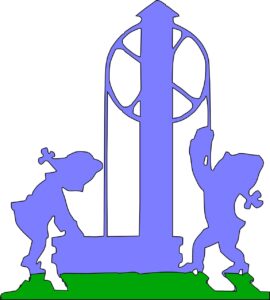
Drawing water from a well often involves the use of ropes and pulleys to exert force. When you pull on the rope, the force is transmitted through the rope to the pulley system. The pulleys multiply the force, making it easier to lift the water.
The magnitude of force required to draw water from a well depends on various factors, such as the weight of the water and the efficiency of the pulley system. A well-designed pulley system can significantly reduce the force needed to lift the water.
Swimming in a Pool

Swimming in a pool involves experiencing several forces. One of these forces is buoyant force, which acts in the upward direction and counteracts the weight of your body. Buoyant force allows you to float in the water.
To move forward while swimming, you need to overcome fluid friction. When you move your arms and legs, you generate a force that propels you through the water. The magnitude of force required to swim depends on factors such as your body size, swimming technique, and the resistance offered by the water.
Playing Cricket


Cricket involves various forces that come into play during the game. When a bowler throws the ball, it experiences the force of air resistance. Air resistance acts in the opposite direction to the ball’s motion, slowing it down.
To hit the ball, a batsman needs to generate a force with the cricket bat. The magnitude of force required depends on factors such as the speed and trajectory of the ball, as well as the desired distance and direction of the hit.
Riding a Bicycle

Riding a bicycle involves the application of force to move forward. When you pedal, you convert the energy from your muscles into kinetic energy, propelling the bicycle forward. The force you apply to the pedals is transmitted through the chain to the wheels, causing them to rotate.
Friction plays a crucial role in maintaining speed and starting the bike. The force of friction between the tires and the road allows the bike to grip the surface and move forward. Without friction, it would be challenging to ride a bicycle.
Squeezing a Lemon

Squeezing a lemon involves applying force to extract the juice. When you squeeze the lemon, you apply a muscular force to compress it. This force causes the lemon to deform, releasing the juice contained within.
The magnitude of force required to squeeze a lemon depends on factors such as the ripeness of the fruit and the desired amount of juice. Ripe lemons are easier to squeeze, requiring less force, while unripe lemons may require more force to extract the juice.
Applying Brake to a Vehicle
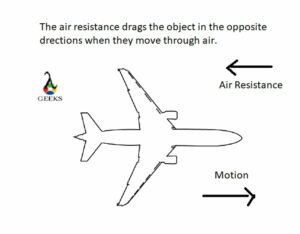
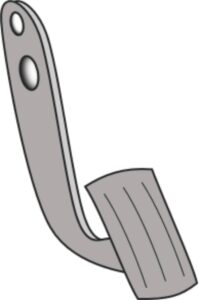
Applying the brake to a vehicle involves the generation of friction force to stop its motion. When you press the brake pedal, it activates the brake system, which applies friction to the wheels. This friction force opposes the vehicle‘s motion, eventually bringing it to a stop.
The magnitude of force required to stop a vehicle depends on factors such as its speed, mass, and the efficiency of the braking system. Higher speeds and heavier vehicles require a greater force to stop within a given distance.
Towing a Car

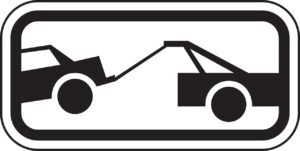
When it comes to towing a car, there are various forces at play that allow for the successful movement of one vehicle by another. Let’s take a closer look at the different aspects involved in this process.
Description of the Force Involved in Towing
Towing a car requires the application of a force known as tension force. This force is exerted on the tow bar, which is connected to both the towing vehicle and the car being towed. The tension force acts in the direction of the tow, allowing the towing vehicle to pull the other car along.
Role of Tension Force in Accelerating the Vehicles
The tension force plays a crucial role in accelerating both the towing vehicle and the car being towed. As the towing vehicle exerts a force on the tow bar, the tension force transfers this force to the car being towed. This transfer of force causes the car to accelerate and move in the same direction as the towing vehicle.
Balancing Tension Force on the Tow Bar

To ensure a smooth and safe towing experience, it is important to maintain a balanced tension force on the tow bar. If the tension force is too high, it can lead to excessive strain on the tow bar and potentially cause damage. On the other hand, if the tension force is too low, the car being towed may not move effectively. Finding the right balance is crucial for a successful towing operation.
Frequently Asked Questions
Q1: What is the magnitude of force?
The magnitude of force refers to the size or strength of a force. It is a scalar quantity that represents the amount of push or pull exerted on an object.
Q2: How can I find the magnitude of a force?
To find the magnitude of a force, you can use the formula: magnitude = mass × acceleration. This formula applies to forces acting in a straight line.
Q3: Can you provide some examples of force magnitude?
Certainly! Here are a few examples of force magnitude:
- Pushing a car with a force of 500 Newtons.
- Pulling a suitcase with a force of 50 Newtons.
- Lifting a weight with a force of 1000 Newtons.
Q4: Are there any illustrations or demonstrations of force magnitude?
Yes, there are various ways to illustrate or demonstrate force magnitude. For example, you can use a spring scale to measure the force required to stretch or compress a spring. Another demonstration involves using a force sensor to measure the force exerted by an object.
Q5: Can you provide some instances or cases of force magnitude?
Certainly! Here are a few instances or cases of force magnitude:
- Calculating the force required to accelerate a rocket into space.
- Determining the force needed to lift a heavy object.
- Measuring the force exerted by a person while pushing a shopping cart.
Q6: How can I find the magnitude and direction of a resultant force?
To find the magnitude and direction of a resultant force, you can use vector addition. This involves adding the individual forces together using the rules of vector addition. The magnitude of the resultant force can be found using the Pythagorean theorem, and the direction can be determined using trigonometry.
Q7: Are there any examples of magnitude and direction of resultant force?
Certainly! Here are a few examples of magnitude and direction of resultant force:
- Two forces of 10 Newtons and 15 Newtons acting at an angle of 30 degrees to each other.
- Three forces of 20 Newtons, 30 Newtons, and 40 Newtons acting at different angles to each other.
Q8: Can you provide some force magnitude exemplifications?
Certainly! Here are a few force magnitude exemplifications:
- Calculating the force required to stop a moving car.
- Determining the force needed to launch a rocket into orbit.
- Measuring the force exerted by a person while lifting weights.
Q9: Are there any force magnitude representations?
Yes, there are various ways to represent force magnitude. One common representation is using vector diagrams, where the length of the arrow represents the magnitude of the force. Another representation is using numerical values with appropriate units, such as Newtons (N) or pounds (lb).
Q10: Can you provide some force magnitude samples?
Certainly! Here are a few force magnitude samples:
- Calculating the force required to move a heavy object across a frictional surface.
- Determining the force needed to stretch a spring to a certain length.
- Measuring the force exerted by a person while rowing a boat.
Hi,
I am Rabiya Khalid, I have completed my masters in Mathematics. Article writing is my passion and I have been professionally writing for more than a year now. Being a science student, I have a knack for reading and writing about science and everything related to it.
In my free time, I let out my creative side on a canvas.